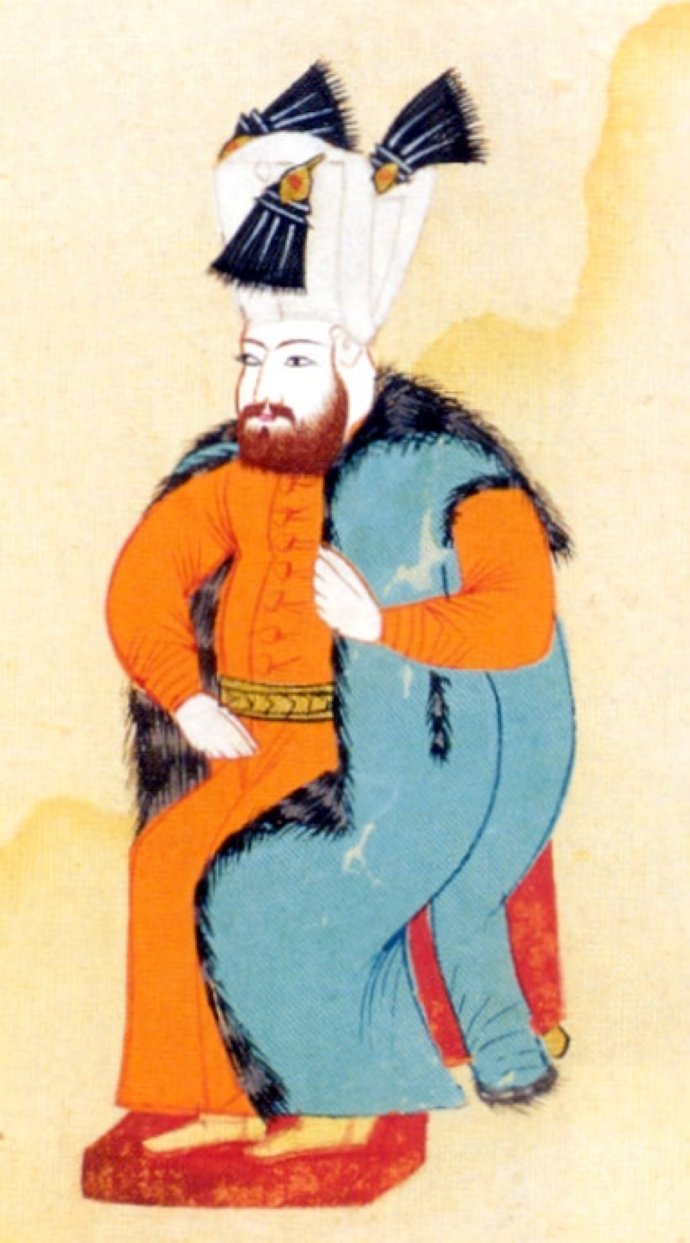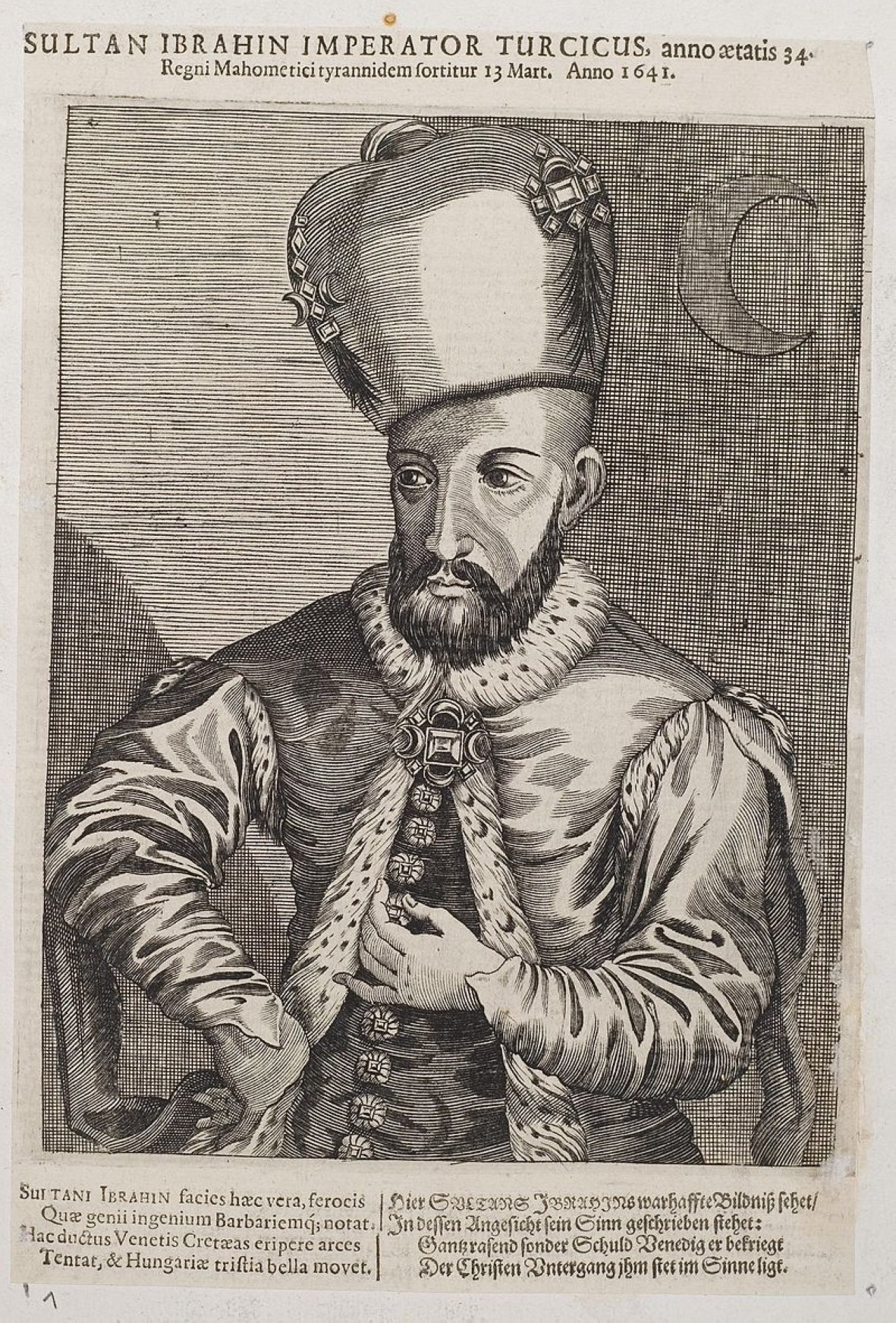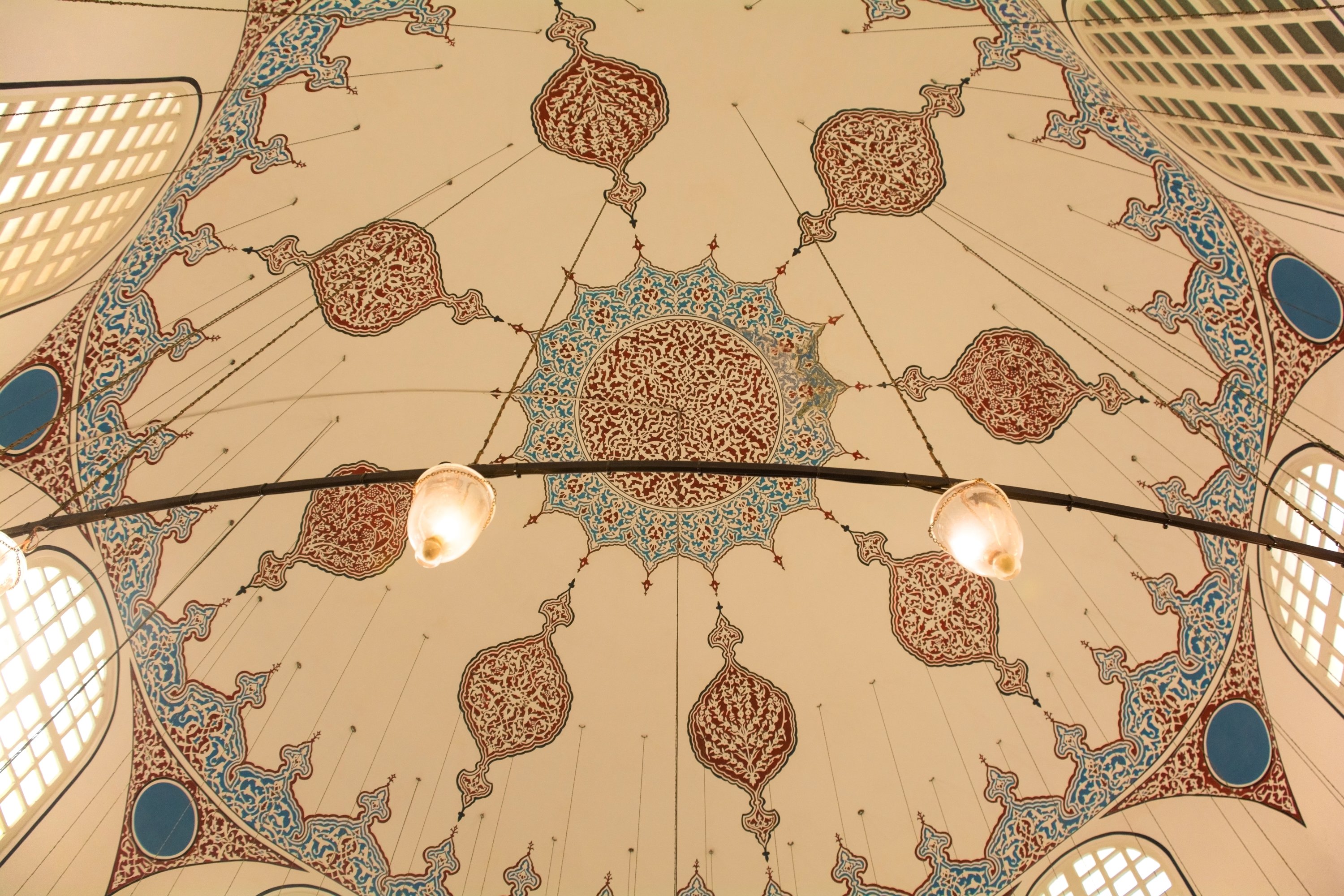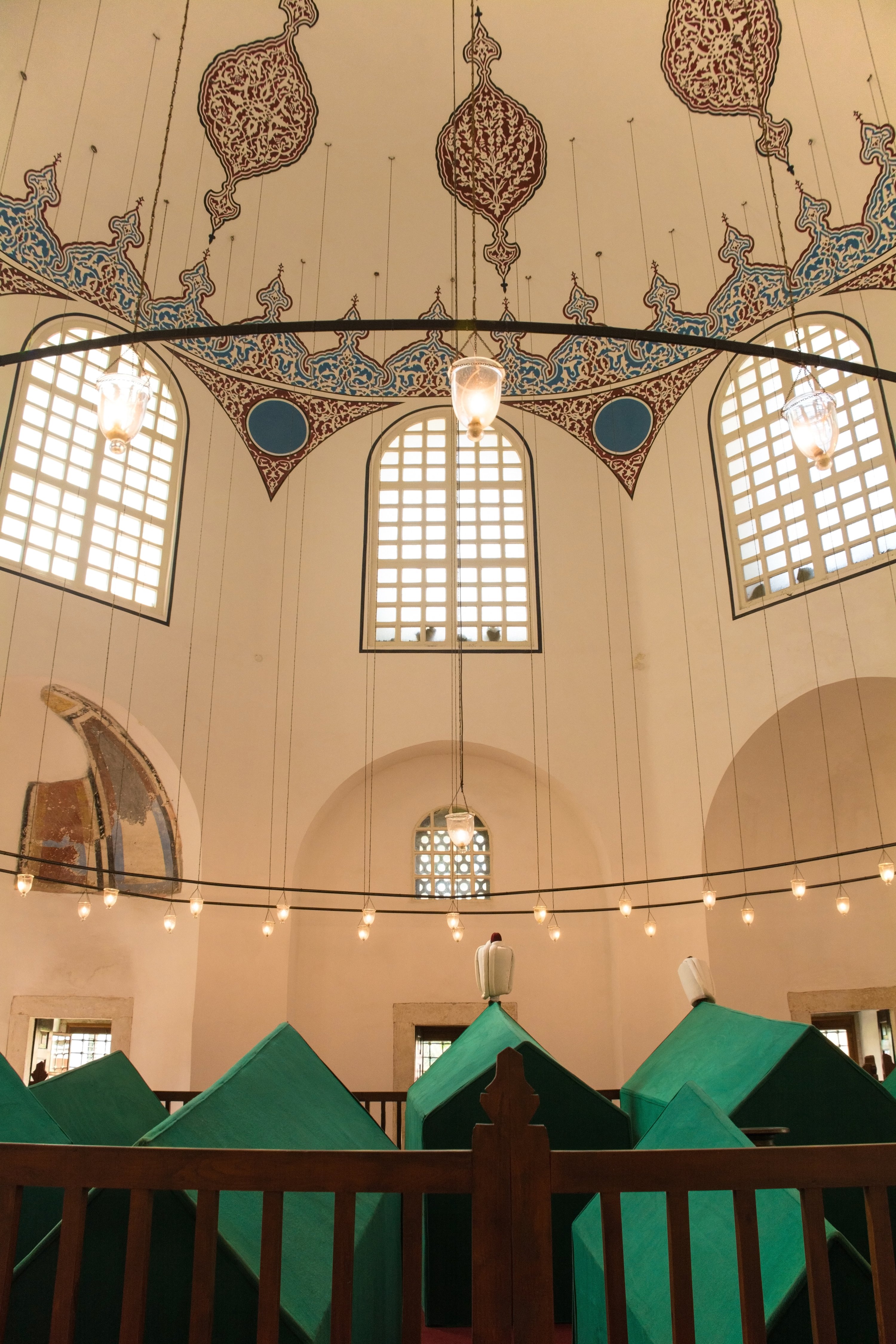.jpg)
MIGHTY SOVEREIGNS of the OTTOMAN THRONE: SULTAN IBRAHIM
There are such personalities in history that a made-up story was written about them and everyone believed that. Sultan Ibrahim, who reigned over the Ottoman Empire from 1640 to 1648, is one of these characters. Even textbooks describe this sultan as Deli Ibrahim, or Ibrahim the Mad. In fact, this is the imputation of 20th-century historians.
Although Ibrahim did not receive a good education in his youth, he educated himself after assuming the throne. The opinions he expressed in official documents and his reasonable responses to those who blamed him after he was dethroned are not what would be expected from someone with a mental disorder. The hundreds of pieces of his handwritten correspondences that have survived to date confirm this.
Ibrahim was held accountable for everything that took place and faced a terrible conspiracy; first losing his throne and then his life. This incident, in which a sultan was unfairly devastated, constitutes one of the most noteworthy pages of history.

We don’t need the sultanate!
Sultan Ibrahim was the youngest of Sultan Ahmed I’s three sons who ascended to the throne and his mother was Mahpeyker Kösem Sultan. One of his brothers, Sultan Osman II "The Young," was dethroned by soldiers and strangled to death; his uncle Sultan Mustafa I was twice dethroned. Living in such conditions, in constant fear of losing his life, may have negatively affected his psychology.
Ibrahim ascended to the throne at the age of 25 in 1640, at a time when the terror over rebellions in Anatolia and military coups in Istanbul still lingered. He was the 18th Ottoman sultan and 83rd caliph. The rumors that Sultan Murad IV ordered his brother Ibrahim’s execution on his final days are not true. On the contrary, Murad sought out his brother before his death, bequeathed him the task of protecting the people and made amends.
When Sultan Murad IV’s death was conveyed to him, Ibrahim did not want to believe the news. Convinced that his brother was testing him, he said: "May God grant a long reign to our sultan. We don’t need the sultanate!" He agreed to assume the throne only after the body of his brother was shown to him.
After donning the turban of second Caliph Umar ibn al-Khattab brought in from the Chamber of Blessed Mantle of the Prophet Muhammad, Ibrahim sat on the throne and prayed: "Oh God! You deem fit a weak subject like me for this post. May you make my nation happy during the days of my reign and make us both content with each other!" This incident is clear evidence that the sultan was not mad.
Among all sources, only the history book “Rawda al-Ebrar” speaks badly of Sultan Ibrahim. If one understands that its author Karaçelebizade Abdülaziz Efendi was the leader of those who dethroned the sultan, the reason becomes clearer. Those who dethroned and murdered him aimed to discredit him as mad and slandered him as dissolute to legitimize their actions.
Sable era
While returning from the Revan campaign against the Safavids, Sultan Murad IV brought Revan castle’s guard Emirguneoğlu Yusuf Pasha to Istanbul as a captive and allocated him a mansion in the Emirgan quarter, which got its name from this figure. The sultan used to visit Emirguneoğlu and benefited from his counsel. After Emirguneoğlu switched allegiance and started spying for Safavid Iran upon Murad’s death, Ibrahim had him executed. Some turned the spot where Emirguneoğlu’s head was laid into a shrine named “Kesikbaş” (severed head), and spread negative rumors about the sultan.
Ibrahim was portrayed as a short-tempered and dissolute sultan who spent his days in the palace with beautiful girls, entirely clad in sable fur – a tale everyone believed. At a time when radiators or even stoves were nonexistent, in a humid city such as Istanbul, people living in high-ceiling places and homes used to burn wood in fireplaces. Therefore, almost everyone used to wear fur to keep themselves warm. Unlike today, however, fur was sewn on the inside of robes.
During the reign of Sultan Ibrahim, there were severe cold spells in which the Golden Horn and even the Bosporus froze. The cold led to increased demand for sable fur, with those who lived in proceeding centuries overlooking the cold and seeing the "sable era" as a period of debauchery. Young Turk-leaning early 20th-century historian Ahmed Refik Altınay also played a role in this. Exaggerated definitions such as “the reign of women,” “the reign of aghas,” or “the sable era” were coined by him.
However, the sultan did not allow for the women of palace, even his mother Mahpeyker Valide Sultan (queen mother), to take part in state affairs. This was why he sent the palace women, including his mother and sisters, into exile. Ibrahim was the last surviving male member of the Ottoman dynasty, and his efforts to have children were considered debaucherous. It is said that in his final days, he devoted himself to entertainment, however, this did not have a negative effect on state affairs since it was personal.
A heavy burden
As we learn from some of his letters, Sultan Ibrahim suffered from serious headaches. Thus, he used to have nervous seizures. He also had severe heart palpitations. He complained about his pains, his lack of appetite, knocking knees, the contraction in his lungs, a foggy feeling in the head, fainting spells and feeling bored. He likely had a tumor in his brain that caused him to feel excited and nervous all the time. Plus, he had trouble fathering children. Without a child, his death would have been the end of the dynasty.
The sultan had some relief after Kazasker (chief judge) Hüseyin Efendi of Safranbolu, who was renowned in Istanbul for his "effective" prayers, recited the Quran to him and prayed for him. Hüseyin Efendi, who received much praise and gained popularity because of this incident, also came to be known as a spiritualist hodja (exorcist), leading to an increase in the sultan’s adversaries.

In the end, the sultan had a boy and the dynasty continued through this prince named Mehmed. As the Ottoman dynasty continued from him "I thank God that I became the head of this family" said Sultan Ibrahim. All subsequent generations of the Ottoman dynasty were descendants of Sultan Ibrahim.
The sultan’s condition gradually worsened as neither medical treatment from doctors nor the spiritual invocation of the hodjas proved beneficial. Despite this, Ibrahim did not neglect state affairs and attended Diwan meetings regularly, asked for information about every incident and was concerned when the replies would come late.
Sultan Ibrahim is one of the most unfortunate Ottoman sultans. Yes, he was not as strong as his elder brother Sultan Murad IV. However, he tried to act like him and could not bear this burden. It was written in chronicles that the sultan was formidable and that the Russian ambassador, who came before him, was afraid of the sultan's formidable figure.
Conquest of Crete
The first years of Sultan Ibrahim’s reign were stable. Although the sultan sought to be directly involved in affairs like his brother, he was in cohesion with the government. He ordered a population census in Anatolia and had taxes collected from the public lowered to a just and reasonable level.
During Ibrahim’s reign, raids were conducted deep into Germany. The Azak (Azov) fortress, occupied by Russians, was retaken, marking the first direct war with the Russians. Ibrahim supported a Russian prince claim his throne in exchange for a pledge to return the former Turkic-Muslim lands of Kazan and Astrakhan to the Crimean Khanate. This shows that the sultan followed the state’s policy to safeguard the world’s Muslims.
The conquest of Crete from Venice was launched over his reign. Situated 180 kilometers (112 miles) away from Anatolia at its closest point, the island of Crete, which severed the connection between the Ottoman mainland and the empire’s territories in North Africa, was the last piece of land conquered by the Ottomans. Before the long and arduous siege, the sultan used to monitor preparations in the shipyard every day. This shows that the sultan knew very well how to follow things up.
In the year 1644, a private fleet of 10 passenger ships bound for Alexandria was attacked by the Order of the Knights of St. Jean based in Malta. Some passengers were martyred while others were taken captive. Captives and merchandise on the ships were brought to Crete and sold. In violation of treaties, Venice taxed these transactions. Upon this, the sultan declared war on Venice with the leadership of Grand Admiral Yusuf Pasha, regarded as the best soldier of his time. Chania, and later Rethymno were conquered. Although Candia (modern-day Heraklion) was placed under siege, when Sultan Ibrahim was dethroned, its conquest was delayed.
What kind of sycophant are you?
The sultan, whose health was already poor, was left all alone following the deaths of two valuable people, Grand Vizier Kemankeş Mustafa Pasha and Sheik al-Islam Yahya Efendi. This was also a result of Mustafa Pasha driving people away from their posts and the sultan’s entourage as he regarded them as rivals.
The sultan’s intolerance to injustice and his inability to keep his feelings secret decreased his supporters and drove them away. The sultan was a humble person though, writing this to one of his viziers in a firman (imperial edict): "Let me know if I wrote something wrong." The sultan once asked his Grand Vizier Semin Mehmed Pasha: "My previous lala (vizier) Kemankeş Mustafa Pasha used to object to me sometimes and said 'this is not reasonable.' You never had a word like this. You agree with everything I say without objection. What is the essence of this?" The sultan was surprised by the sycophantic words of the grand vizier when he responded: "Your words are the outcome of divine inspiration."
His last Grand Vizier Hezarpare Ahmed Pasha did not shy from lying to the sultan regarding foreign affairs. Thus, the sultan did not have a single useful soul in this entourage, with sycophants and hypocrites bringing about the sultan's end.
Austrian historian Joseph von Hammer-Purgstall states that during Ibrahim’s reign, state affairs ran smoothly and that history, a ruthless critic, will show tolerance for the personal flaws of the Sultan that did not have serious effects. During Ibrahim’s reign, science and philosophy flourished, and the Ottoman Empire maintained its position as the strongest state of the time.

A palace coup
As the conquest of Crete dragged on and the Venetian navy roamed the Aegean, a severe winter descended on Istanbul. Since the Golden Horn and Bosporus froze, ships that brought supplies to the capital could not dock, leading to price increases. A disgruntled mass attributed the developments to the sultan's being ill-omened while the frequent replacement of governors led to disturbances in the countryside and rebellions broke out. When rebels arrived in Üsküdar during the Nasuhpaşazade rebellion, the sultan himself crossed to Üsküdar to stand against the rebels, who then fled. Janissary aghas fell at odds with the grand vizier and then decided to dethrone the sultan. They convened in the Fatih Mosque and demanded the grand vizier appear according to their tradition. When the grand vizier ran away and hid, the rebels found and killed him. They dismembered his dead body and hung the parts over a tree in Sultanahmet Square. This incident gave Ahmed Pasha his historical nickname of Hezarpare, which literally translates as “thousand pieces.”
The rebels than marched on Topkapı Palace and called on the sultan for an extraordinary diwan meeting. When the sultan refused, some members of the ulama (interpreters of Islamic knowledge) appeared before the sultan, notifying him of his dismissal. Karaçelebizade, who led the delegation, heavily insulted the sultan, who in turn accused him of treason and rebellion. In the meantime, rebels raided the palace and imprisoned the sultan and two of his concubines in a room. In an unprecedented incident, the room’s window was sealed shut and lead was poured into its lock, leaving a gap wide enough for only a shallow pan to pass, almost as if the sultan were buried alive.
On what grounds?
The next day, the cavalrymen who did not take part in the rebellion heard about the situation and moved to restore the sultan’s rule, leading rebels to fear the sultan’s wrath and revenge. A trumped-up fatwa for the sultan’s execution was obtained from Sheikh al-Islam Abdürrahim Efendi. The grand vizier, sheikh al-Islam and janissary agha arrived in the sultan’s cell. According to historian Naima’s recounts, the sultan, wearing a violet-pink robe, was reading the Quran when they arrived. When he heard the fatwa, he asked: “On what grounds mentioned in this book are you killing me?” Even the executioner named Kara Ali, who Naima described as a man “without a ray of light in his face,” could not bear with the situation and tried to run away but was prevented from doing so by the janissary agha. The 33-year-old sultan’s cries were ignored and he was strangled to death before the weeping people of the palace. He was the second Ottoman sultan to be dethroned and murdered after his elder brother Sultan Osman II.
Sultan Ibrahim was interned in the courtyard of the Hagia Sophia Grand Mosque next to his equally unfortunate uncle Sultan Mustafa I in the year 1648. His 7-year-old son Şehzade Mehmed ascended to throne. Sultan Mehmed IV wrote the names of 70 people accountable for his death in a notebook and kept it; he later took care of them when the time came. Out of Ibrahim’s six sons, Mehmed, Suleiman and Ahmed consecutively became sovereigns. The late sultan’s spouse Hadice Terhan Haseki is regarded as one of the most famous and highly qualified women in Ottoman history. The tragic life of Sultan Ibrahim also drew attention in Europe and became the subject of two theater pieces by William Whitaker and Mary Pix. The Iftariye Kiosk, an original gazebo, commissioned by Sultan Ibrahim on the Topkapı Palace grounds is among the masterpieces of Turkish copper arts.

I am indeed the sultan!
Sultan Ibrahim is described as generous and compassionate. He donated a lot to the poor. He paid attention to ensure the treasury revenues were collected regularly, spent properly and that wages were paid without delay. He used to covertly roam the city and monitored the people’s needs on the spot. Penned by the sultan and addressed to the grand vizier, a famous firman says: "You are my lala (my grand vizier); when I was touring the city, I saw people waiting in front of bakery to buy bread. I do not consent for any of my subjects to wait even for an instant to buy bread. Attend to this problem well. Otherwise, I’ll cut your head off!"
The sultan commissioned the translation of a precious book on Islamic law titled "Mülteka" into Turkish. This book, named "Mevkufat," became the semi-official code of conduct in Ottoman courts for four centuries to come. Once, when Sultan Ibrahim was in Edirne, someone from the public came forward and greeted the sultan, saying he had a complaint. The sultan asked to hear the complaint, promising to take measures and punish those who were responsible. The man said: "My sultan! That bandit called Kerim Agha oppressed me. He took my stuff and property and threw me and my family out to the streets. I was once among the wealthiest families, now I’m in need of a tiny bit of food." After the sultan heard witnesses, he had Kerim Agha brought before him and asked: "Agha! There is complaint about you that you rob the oppressed and throw them to the streets. Is that correct?" The agha, instead of apologizing, started speaking nonsense, and got stubborn, saying that he was a janissary. Hearing this, the sultan jumped up from his seat, grabbing the agha by the collar and throwing him to the ground, saying: "Shame on you! If you are a janissary, I am indeed the sultan!" The agha was punished and the man was given what was rightfully his.
Önceki Yazılar
-
DEATH IS CERTAIN, INHERITANCE IS LAWFUL!25.06.2025
-
THE SECRET OF THE OTTOMAN COAT OF ARMS18.06.2025
-
OMAR KHAYYAM: A POET OF WINE OR THE PRIDE OF SCIENCE?11.06.2025
-
CRYPTO JEWS IN TURKEY4.06.2025
-
A FALSE MESSIAH IN ANATOLIA28.05.2025
-
WAS SHAH ISMAIL A TURK?21.05.2025
-
THE COMMON PASSWORD OF MUSLIMS14.05.2025
-
WERE THE OTTOMANS ILLITERATE?7.05.2025
-
OTTOMAN RULE BENEFITED THE HUNGARIANS30.04.2025
-
An alternative state to Istanbul in Anatolia: THE ANKARA ASSEMBLY23.04.2025